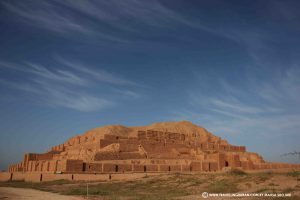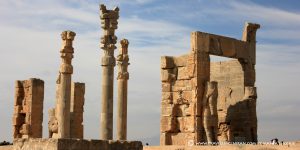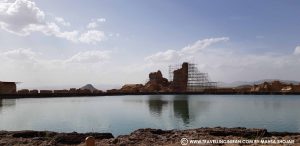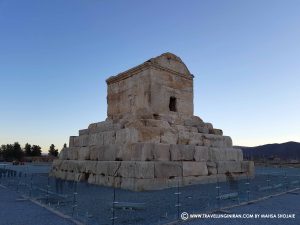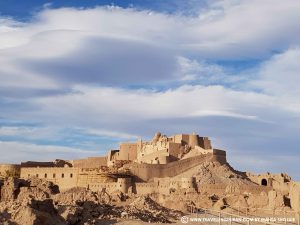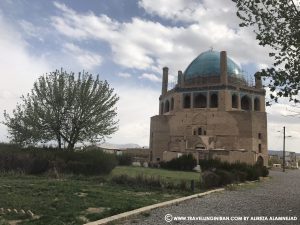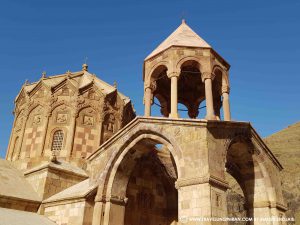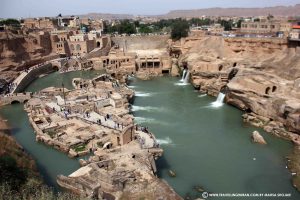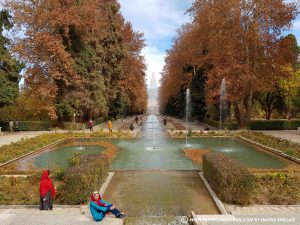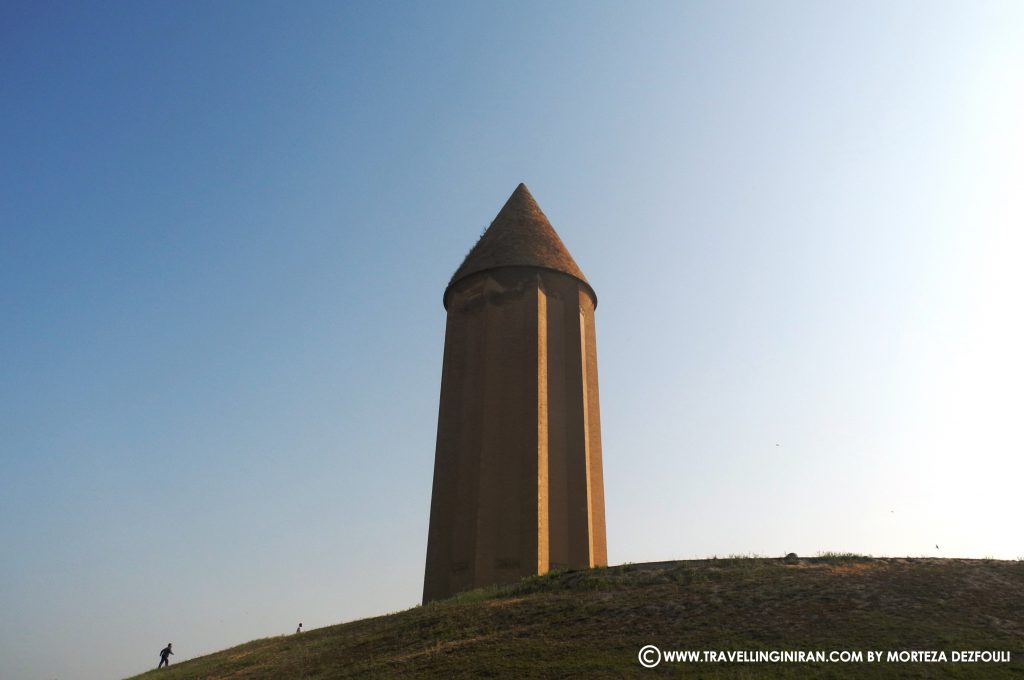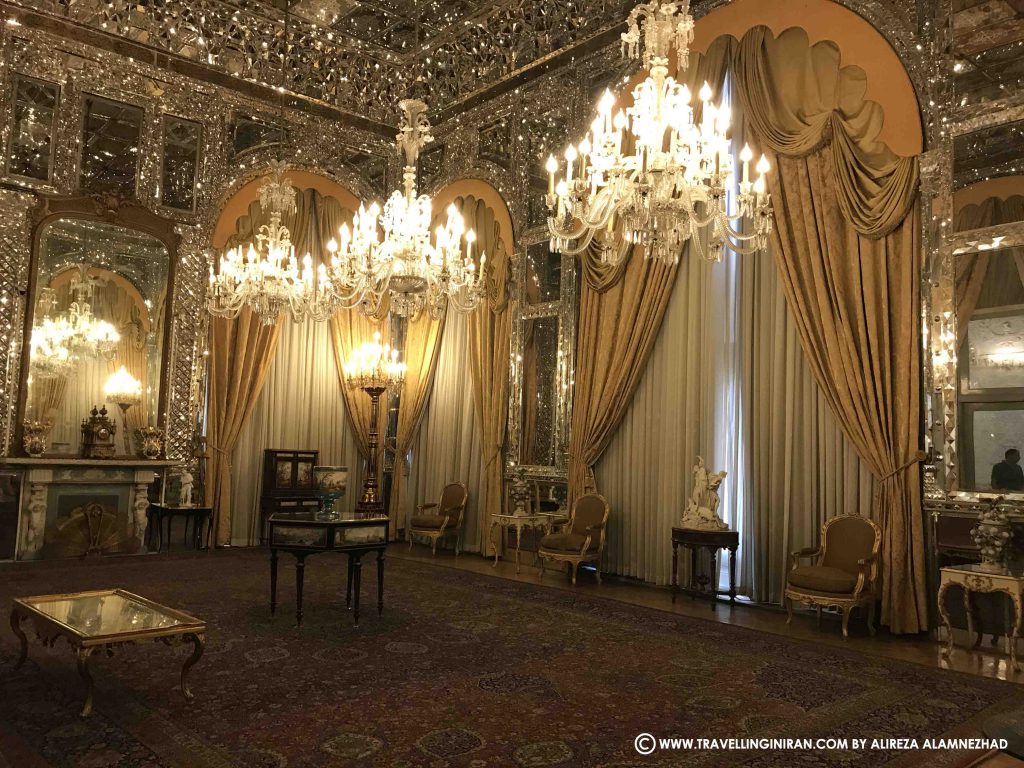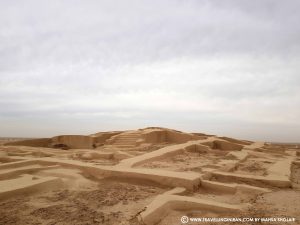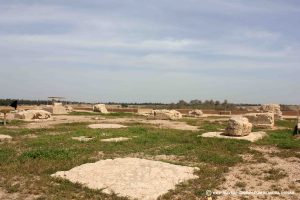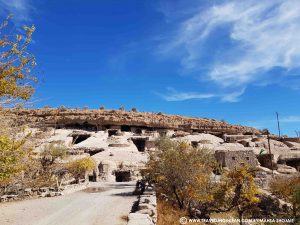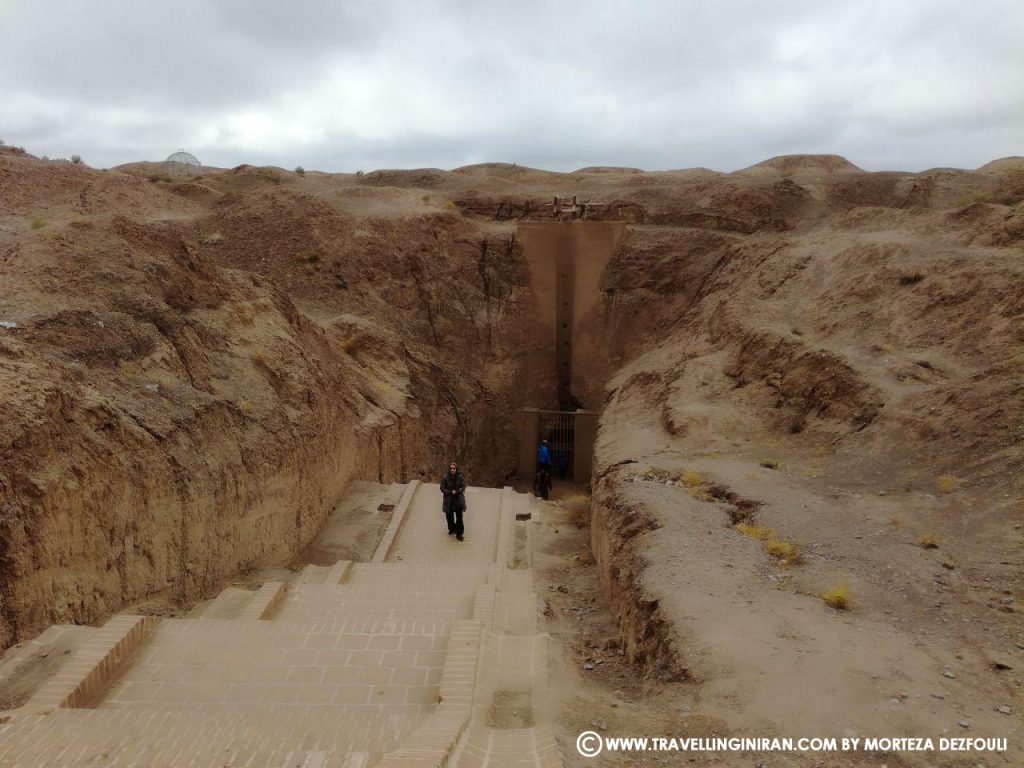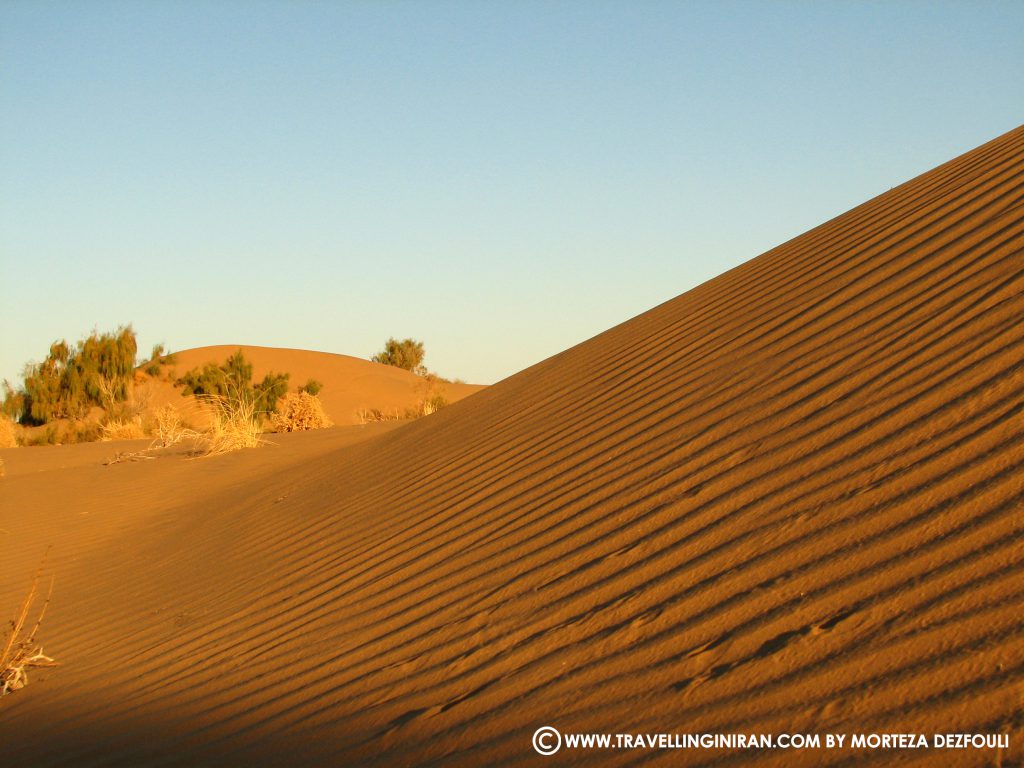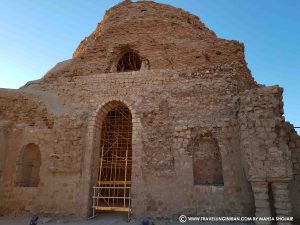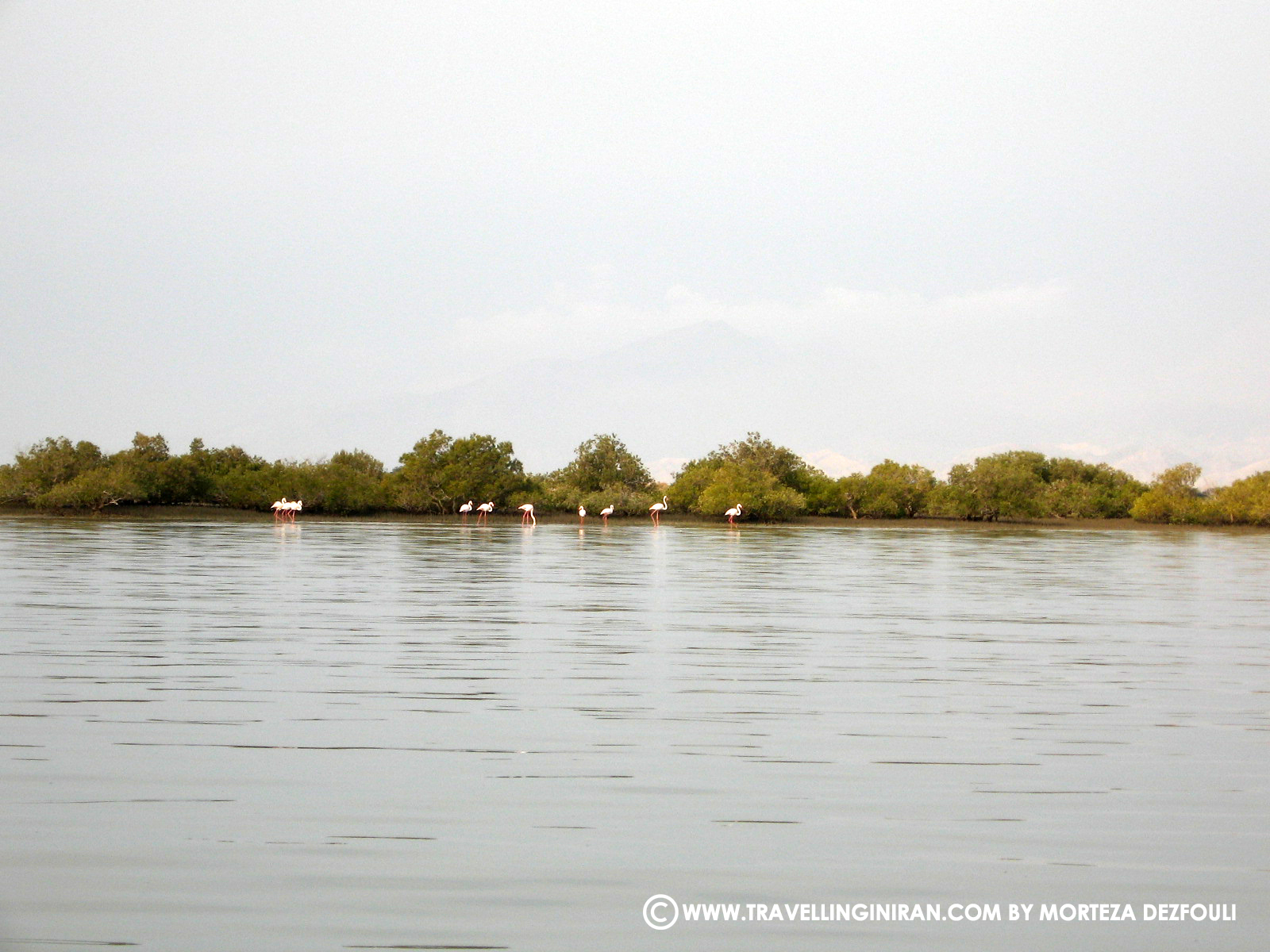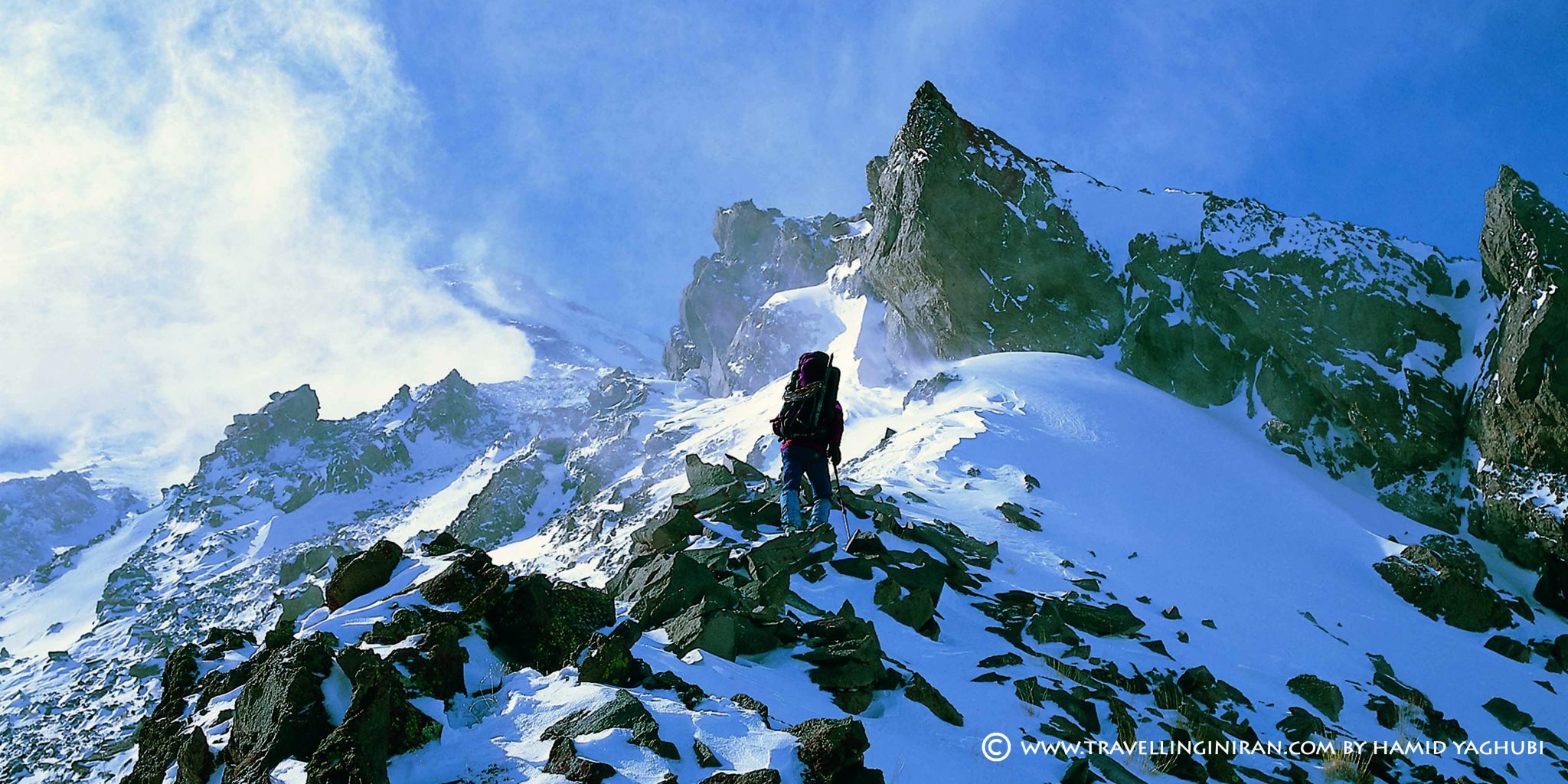Chogha Zanbil is a ziggurat; a type of massive religious structure built in ancient Mesopotamia, with successively receding levels. It has a square plan, each side 105 meters long. It had five stories, 52 meters tall from the base, when it was first built. But now it’s only two and a half stories, approximately 25 meters tall. Chogha Zanbil was built in a city called “Dur Untâsh” by the order of the Elamite King “Untâsh Gâl” in 1250 BC. It was destroyed in 640 BC by the Assyrian King “Ashurbanipal”.
Iran UNESCO Sites
2- Persepolis (1979)
Persepolis is one of the most famous complexes of ancient times. The building began in 518 or 520 BC by Darius I, and later his son Xerxes I and other Achaemenid kings continued the construction. Persepolis is built on a 125000 square meter stone platform. Some of its most important parts include: Apadana Palace, Palace of 100 columns, Hadish Palace, Treasury, Gate of All Nations, and Tachara Palace. This complex was razed in 330 BC by Alexander the Great.
3- Naqsh-e Jahan Square (1979)
Shah Abbas, the fifth Safavid King, built this square. With a 163×510 meter dimension, it was once one the largest squares of the world. At first it was a place for holding military drills, ceremonial festivals, and a playground for Chogan (Polo). Some very famous sites are located around this square: Ali Qapu Palace, Shah Mosque, Sheikh Lotf Allah Mosque, and Qeysarie Gate. European explorers such as Tavernier, Chardin, and Morier, had seen Naqsh-e Jahan Square and wrote about its charm and beauty.
4- Takht-e Soleyman (2003)
5- Pasargadae (2004)
Pasargadae is a complex of ancient monuments from the Achaemenid Empire. It consists of monuments such as: Tomb of Cyrus the Great, Pasargadae house of worship, Pasargadae Royal Garden, Gate Palace, bridge, Audience Palace, two pavilions, Fountains of the Royal Garden, Tomb of Cambyses, Tal-e Takht, Mozafari Caravansarai, the sacred area, and Bolâghi Gorge.
6- Bam and its Cultural Landscape (2004)
The largest adobe building in the world is located near the city of Bam in Kerman Province. More than eighty percent of the citadel was destroyed by an earthquake in 2003. Japan, Italy, and France are some of the countries which helped with its renovation after the earthquake. In 2013 the site got out of the “in danger list” due to the renovations.
7- Soltaniyeh (2005)
Oljeitu, also known as Mohammad Khodabandeh, the eighth Ilkhanid king, built this structure between 1303 to 1312 AD. It is the third largest dome in the world after the domes of Cathedral of Santa Maria del Fiore and Hagia Sophia. The dome stands 49 meters tall from its base. The dome is the central part of an octagonal plan, each side 17 meters long. This structure has eight iwans and eight minarets. Brickwork, stucco, and tile-work are its main decoration.
8- Bisotun (2006)
By the order of Darius the Great, this bas-relief was engraved on Mount Bisotun between Hamedan and Kermanshah. The bas-relief portrays Darius holding a bow, and treading on the chest of a figure, with other rebels in chains in front of him. The inscription is written in three important languages of those times: Old Persian, Elamite, and Babylonian. Sir Henry Rawlinson managed to read it in 1850.
9- Armenian Monastic Ensembles of Iran (2008)
Three to five names can be found in this list. The Monastery of Saint Thaddeus, the Saint Stepanos Monastery, and the Chapel of Dzordzor are mentioned in all references, but the Chapel of Chupan, and St. Mary Church are only mentioned in some references.
- The Monastery of Saint Thaddeus (also known as Qare Kelisâ) is located in North-East of Chaldoran County, near a village called Qare Kelisâ.
- The Saint Stepanos Monastery is located about 15 km west of the city of Julfa and 6 km from the Aras river.
- The Chapel of Dzordzor (or The Chapel of Holy Mother of God) is located 12 km south of Maku County, West Azerbaijan Province. To avoid being submerged in the dam reservoir, the building was relocated to its current location following the decision to build the Baron Dam on Zangmar river.
- The Chapel of Chupan is located west of Julfa and near the Aras river.
- St. Mary Church is located in the city of Urmia, and dates back to the 16th century.
10- Shushtar Historical Hydraulic System (2009)
It’s a complex irrigation system including different structures that work together; structures such as bridges, weirs, water mills, canals, waterfalls, and large tunnels. The construction of this site dates back to the Elamites Era. Basically, the GarGar weir helps to cut the river flow and increases the water to fill three tunnels which are carved in stone. This site was used for industrial purposes, and well as supplying water for residents during drought.
11- Tabriz Historic Bazaar Complex (2010)
This large and covered bazaar is located in the city of Tabriz in Iran. There are around 8000 shops in this bazaar which are located in 16 râstes, 14 dâlâns (corridors), 20 timches, and 25 sarâs. Just like any other bazaar in Iran, a wide range of merchandise can be found in this bazaar.
12- Sheikh Safi al-din Khānegāh and Shrine Ensemble in Ardabil (2010)
This site is one of the historical and ancient monuments in Ardabil, in North West of Iran. Besides Sheikh Safi’s shrine, the shrines of Shah Ismail I (the founder of the Safavid dynasty) and his wife, Tajlu Khanum (mother of Shah Tahmasp I), and some other Sheikhs and royalties of Safavid dynasty, and also martyrs of the battle of Chaldiran are located here. Some other parts of this complex consist of chini-khâne, mosque, janat-sarâ, khânegâh, chele-khâne, shahid-gâh, and cherâgh-khâne.
13- The Persian Garden (2011)
The Persian Garden has three main features: 1. water flows through it, 2. it’s surrounded by a wall, 3. a pavilion and pool can be found inside the garden. The early Persian Gardens were built at the exit of qanats. Some of these gardens can be found in Tabas, Yazd, Gonabad, Birjand and most desert areas. The Persian Garden reached its peak during the Safavid dynasty. Overall there are thirteen Persian Gardens in the UNESCO World Heritage list. Four of these gardens are not located in Iran: Taj Mahal and Humayun’s Tomb of India, Babur Garden of Afghanistan, and Shalimar Gardens of Pakistan. The other nine gardens which are located in Iran include: Pasargadae, Eram Garden in Shiraz, Chehel Sotun in Isfahan, Fin Garden in Kashan, Abas Abad Garden in Behshahr, Shazdeh Garden in Mahan, Dolat Abad Garden in Yazd, Pahlavanpour Garden in Mehriz, and Akbariyeh Garden in Birjand.
14- Masjed-e Jāmé of Isfahan (2012)
The Jâme Mosque of Isfahan (also known as Jome Mosque, or Atiq Jâme Mosque) consists of Arabian, Turkish, and Iranian dynasties’ architecture. The original building was built in the Abbasid Caliphs’ era and consisted of a large courtyard surrounded by shabestâns. The shabestâns were expanded during the Buyid dynasty. Two domes and a minaret were added to the building in the Seljuqid dynasty. This mosque has gone under many changes during the Ilkhanid, Muzaffarids, Timurid, and Safavid dynasties.
15- Gonbad-e Qābus (2012)
This monument is masterpiece of early Islamic architecture, and was built by the order of Ziyarid ruler “Abol Hasan Qâbus ibn Vushmgir ibn Ziyâr, also known by Shams-ol-Ma’âli” in 1006 AD. This 53 meters high tower is the highest brick tower and has influenced other monumental buildings in Iran, Anatolia, and Central Asia. Another significant feature of this majestic monument is its Kufic Inscription with Râzi style.
17- Shahr-i Sokhta (2014)
Shahr-e Sukhteh (meaning “the burnt city”) is an ancient urban settlement in Iran, and is located around 50 kilometers to the south of Zabol, in Sistan and Baluchistan Province. This city covers an area of 280 hectares and five important sections: residential section, central section, industrial section, monumental buildings, and burial grounds.
18- Susa (2015)
Susa is an ancient city which was a settlement for farmers in 9000 BC and people have been living in the city since 4000 years ago. It was the political capital of the Elamites and a winter palace during Achaemenid Empire, and was built in the “Royal Road”. The Assyrian King “Ashurbanipal” conquered the city between 465-460 BC and razed it to the ground like other Assyrian conquests.
19- Cultural Landscape of Maymand (2015)
Meymand is a rocky village, 30 kilometers from Shahr-e Babak county in Kerman province. In the UNSECO World Heritage list, it’s been said: “The villagers are semi-nomadic agro-pastoralists. They raise their animals on mountain pastures, living in temporary settlements in spring and autumn. During the winter months they live lower down the valley in cave dwellings carved out of the soft rock, an unusual form of housing in a dry, desert environment. This cultural landscape is an example of a system that appears to have been more widespread in the past and involves the movement of people rather than animals.
20- The Persian Qanat (2016)
Qanat or Kâriz is an underground tunnel which transfers water from foothills to a village. These tunnels may be several kilometers long. Eleven qanats in Iran are in the UNESCO World Heritage List due to features such as being the deepest, longest, or oldest qanats. These qanats are: Ghasabe Qanat of Gonabad, Balade Qanat of Ferdos, Hasan-abad Qanat of Mehriz, Zârch Qanat of Yazd, Ebrahim-abad Qanat of Arak, Mazd-abad Qanat of Meymeh, Vazvân Qanat of Meymeh, the two-story Qanat of Ardestan, Qanat of Jupar, Akbar-abad and Qasem-abad Qanats of Kerman.
21- Lut Desert (2016)
The Lut Desert is the only Natural site among the twenty-three sites which are in the UNESCO World Heritage list, the other twenty-two are all Cultural sites. The warmest point on Earth has been recorded in this desert with 70° C. Its maximum length is around 800 kilometers, and the maximum width is around 200 kilometers.
22- Historic City of Yazd (2017)
The specific architecture for dry and warm climate can be observed and studied in the historic part of Yazd. This part of the city was built according to the needs of its people. Some specific structures can be found in the center of each district, most of which are still standing to this day: a bathhouse, a mini bazaar (or bazaarche), a cistern, a mosque, a hoseiniye, a square, mini workshops, and water stream (for access to qanat). The visual indicators of the historic part of the city include of minaret, dome, and wind catcher.



